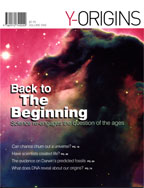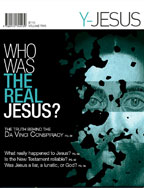RED SHIFTING THE BIG BANG THEORY INTO HIGH GEAR
In the late 1920s, the American astronomer Edwin Hubble noticed something unusual as he gazed into the heavens. It wasn’t a new planet or little green men waving at him from Mars; it was something both more tedious and at the same time more thrilling.
Hubble had been spending countless nights at the Mount Wilson Observatory, studying the stars and galaxies and especially the spectrum of color in the light they sent our way. He discovered that the light from most other galaxies was shifted to the red end of the spectrum, which indicated they were moving away from us.
Furthermore, the farther a galaxy was away from us, the more red shifted its light was and, thus, the faster it was moving away from us. The only explanation for all of this was that space itself was expanding, causing all galaxies to move away from each other. In an expanding universe, from any point in space (including our own), it would appear that most stars and galaxies were racing away. And the farther away they were, the faster they would be racing.
There it was in the red shift: proof that Einstein had been right in the first place (before he fudged his formula) and that the universe really was expanding. Proof, in other words, that the universe was not eternal but had a beginning.4
And yet not everyone accepted the proof at first, including a scientist named Sir Fred Hoyle (former Plumian professor of astronomy at Cambridge University and founder of the Institute of Astronomy at Cambridge). Ironically, it was Hoyle who originally described the event as a “big bang,” meaning to mock the idea. The name stuck. (According to physics professor Brian Greene, the term “big bang” is actually misleading since there was nothing to explode and no space in which an explosion could take place.)5 But unlike Hoyle, many other scientists began coming over to the side of the newly named theory.
The world’s leading astrophysicist, Stephen Hawking, who has held the esteemed position of Lucasian Professor of Mathematics at Cambridge, calls Hubble’s discovery of an expanding universe “one of the great intellectual revolutions of the twentieth century.”6 The discovery that the universe had a beginning has led to a new science called cosmology, which attempts to understand what happened at the origin of the universe, how it works, and what will happen in its future.
The new science led cosmologists to take another look at a seemingly mundane insight from the 19th century, the second law of thermodynamics.
Back | Endnotes | Next
|




